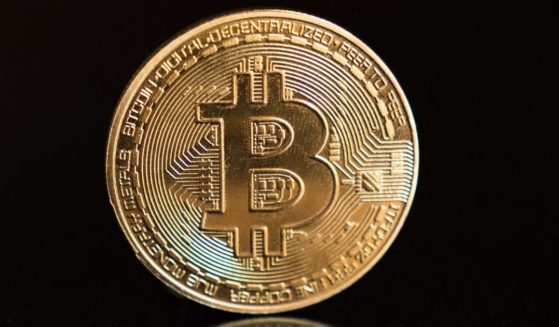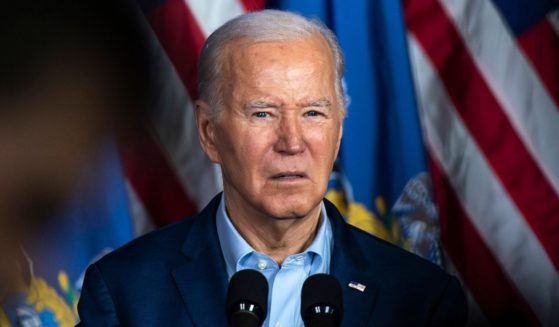Pelosi's Drug Plan Will Cost American Lives
Democratic House Speaker Nancy Pelosi has released her sweeping plan to address the cost of prescription drugs. Notably, the plan includes not only burdensome taxes on prescription drugs, but also draconian provisions to permit so-called government “negotiation of prices,” in reality price controls. We do not need to conjecture about the effects of these policies, we know what they will do — deter drug innovation and reduce access to life-saving medication.
Why does the pro-life community care about drug pricing?
Since its inception, the National Right to Life Committee and those in the pro-life community have been equally concerned with protecting older people and people with disabilities from euthanasia as with protecting the unborn from abortion. We have long believed that the involuntary denial of life-saving medical treatment is a form of involuntary euthanasia, and therefore have opposed government rationing of health care.
Simply put, laws like Pelosi’s proposal prevent people from accessing current life-saving medication, and prevent new innovative medications from coming to market. This is government rationing.
Dating back several decades, NRLC worked to fight the 1994 Clinton Health Care Plan’s proposed insurance premium price controls because they would have forced rationing.
In 2003, NRLC scored a vote in favor of the Medicare Prescription Drug, Improvement, and Modernization Act (H.R. 1) because it empowered older Americans to avoid involuntary denial of life-saving treatment by giving them this option, both for the “core” Medicare benefit that includes life-saving medical treatment and the new prescription drug benefit. In 2019-10 we fought against the inclusion of numerous provisions in the Obama health care plan, and worked to see its most egregious rationing provision, the Independent Payment Advisory Board repealed in 2018. IPAB’s sweeping powers could have limited not just Medicare spending, but also health care paid for with nongovernmental dollars.
Having access to health care is a pro-life priority.
Medicare, while only paying a limited amount of the real cost of the care, is able to deliver high-quality health benefits and prescription drugs.
How?
In large part, by cost-shifting from Americans who have private insurance. However, the Pelosi plan, through both onerous taxes and price controls, won’t merely apply price caps to just Medicare; it would apply to the sales of impacted drugs in every corner of the health care system –- destroying any current ability to offset costs of life-saving drugs.
The Pelosi plan would require drug companies to “negotiate” Medicare prices with the federal government for up to 250 drugs that do not have a generic version. If companies refuse to agree to the government-set rates, they would face a 95 percent penalty tax on gross sales of each drug. The companies would also be required to use these so-called “negotiated” rates in the private market, where over half of Americans have their care.
A study analyzing the availability of drugs released between 2011 and 2018 showed that Americans have access to nearly 90 percent of new medications. However, in 14 countries including Canada, Japan and the U.K. with government-set drug pricing or price controls, people only had access, on average, to only 47 percent of new drugs.
The bottom line is that drug price controls like this will limit access to life-saving drugs. Drug price controls have a devastating effect on the development of new life-saving drugs. Research and development are financed by investors, and investment in pharmaceutical development is risky. Many promising leads fail to work out and never make it to market.
According to a 2018 ongoing analysis conducted by Deloitte, returns on research and development “have declined to 1.9 percent, down from 10.1 percent in 2010 — the lowest level in nine years … Returns have been impacted by the growing cost of bringing a drug to market which now stands at [$2.168 billion] — almost double the [$1.188] billion recorded in 2010.”
Nonetheless, America remains the world leader in the development of new life-changing drugs. According to the 2018 report from the Council of Economic Advisers, “Reforming Biopharmaceutical Pricing at Home and Abroad,”
The U.S. government and biopharmaceutical industry have been the central engines in lowering the price of better health for patients worldwide by being both the world leaders in biopharmaceutical innovation as well as the source of innovative returns to those investing in such innovations. The U.S. market makes up 46 percent of … sales of brand name innovative drugs, funds about 44 percent of world medical R&D, invests 75 percent of global medical venture capital, and holds the intellectual property rights for most new medicines.
Those who say drugs are overpriced often compare the high price of an innovative, breakthrough drug with the low cost of its production. They wrongly conclude that the patient is being “gouged” to produce “windfall” profits. This perspective fails to recognize not only the huge development costs for that drug, but the high odds against any given potential drug ever getting to the market and then actually making money. Only the possibility of a high rate of return can induce investors to invest on the few drugs that come to market.
Under current law, prices are negotiated by competing private insurers, not simply accepted at a level set by the drug companies. However, there are checks and balances on these negotiations by private parties that help prevent them from driving prices so low as to result in rationing and harm to new drug development — checks and balances not present when the government steps in to set prices.
It was precisely because policymakers recognized this, and feared its impact on the ability to develop new lifesaving drugs, that the 2003 Medicare bill set up the prescription benefit in a way so as to break up the negotiating process for drug prices among a variety of insurance plans, and prohibited the federal government from interfering in those negotiations.
Under new government price setting, the Pelosi plan would drive most companies out of the process of innovation, if not out of business altogether.
Understandably, people focus on the large amounts they are spending for new drugs. However, it is thanks to the abundance of more effective cutting-edge drugs and access to them that more Americans are able to enjoy a longer and enhanced quality of life.
Certainly there are common-sense fixes for many of the cost issues involving changes to how generic drugs come to market, or dealing with problems in individual drug pricing (like insulin). While the Pelosi plan might save money it will do so at an astonishing cost to innovation, access and lives — not only for those in Medicare, but for all Americans.
The views expressed in this opinion article are those of their author and are not necessarily either shared or endorsed by the owners of this website. If you are interested in contributing an Op-Ed to The Western Journal, you can learn about our submission guidelines and process here.
Truth and Accuracy
We are committed to truth and accuracy in all of our journalism. Read our editorial standards.











